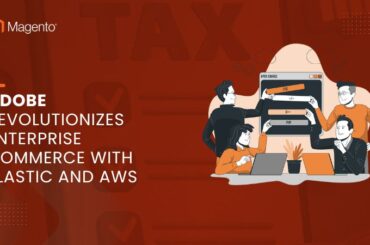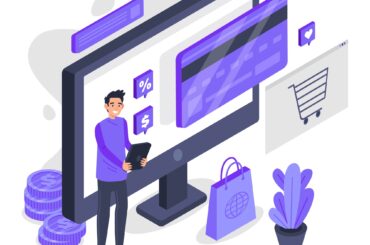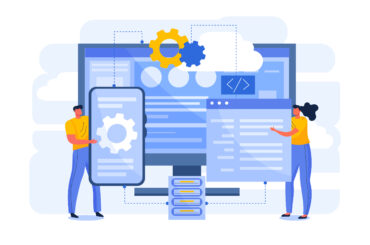How to Enhance the Security of Your Magento eCommerce Store
Last Updated | July 27, 2023
Table of Contents
One of the major advantages of a powerful platform like Magento is the security features offered. Magento Cloud Commerce is specially designed to provide an extremely secure environment, and it ensures that every customer is separated from other customers and responsible for their own server environments.
Magento 2 is ten steps ahead and facilitates you in not only in creating safe and secure websites with Web Application Firefall, DDoS as well as CDN protection, but also in testing and encryption, and secure operations including the file system being read-only, logging, and backups as well as remote deployment. The best part is that the top-of-the-line security offered by Magento isn’t just for B2C but also for Magento B2B development.
After all this, there are still risks involved. This is because, just as technology is advancing and on the rise, so is technological and cybercrime. However, there is always a way around these risks. There will always be things you can do to enhance the security of your eCommerce store. We have rounded up some tips for you that can help you do exactly that, while also keeping in mind not to raise your Magento cost.
Salient Tips on How to Enhance Magento 2 eCommerce Store Security
1. Regularly update your software
Always ensure that you are using the latest updated version of Magento. This includes verifying your Magento version, upgrading your root directory, updating your project as well as your security patches.
Moreover, you can backup your database and your entire code before you make any changes, and also use SSH for your remote server login. Lastly, you can add, commit and push any code changes, and go for complete deployments instead of incremental deployments.
2. Secure your Magento admin panel
It is extremely important to secure your admin panel in order to protect your eCommerce website and store. Otherwise, anything can happen if it gets hacked, for instance, you can be subjected to malicious malware, your data can be stolen or changed, basically, your entire store can be taken over by your hacker.
You can secure your admin panel firstly by modifying your default admin URL. This means you have to set a custom admin URL and use that to login and get redirected to your dashboard.
The second thing you can do to secure it is that you can limit admin access according to admin users and their roles. This way you have different levels of accessibility to your admin dashboard for different resources and roles.
3. Maintain your login record
Stay vigilant and keep a check on your login record by regularly checking your login log from your admin dashboard. The login log also has details such as the IP address of the user who logged in, the login time, any referral URL if it was used, browser platform and version, etc. You should especially check every time there is a suspicious login and always keep track.
4. Set alerts and warnings for login failure
Set up a warning system so that you can prevent any security breaches and people from attempting and trying out different passwords in order to login.
Your warning system can ensure that after a preset number of failed break-in attempts, an alert or warning will be issued to you, the store owner, and the login feature will be locked for a certain period of time. This ensures that further attempts cannot be made to break into the system.
5. Turn on automated log out in case session expires
Set a time limit for your admin session lifetime for when the session expires in case of inactivity because even in this circumstance, unauthorized people may try to access your admin panel and misuse your information or try to steal or modify your data.
When you set up an automated logout, every time a session shows inactivity for a certain period of time, let’s say 10 seconds, the session will expire and you will be automatically logged out of the system and will need to provide login details once again.
6. IP restriction
Manage your access permissions by assigning lists containing authorized IP addresses as well as lists with forbidden IP addresses. Enable and restrict your permissions according to your designated whitelists and blacklists. IP addresses can be saved as singular IPs, a range, or multiple ranges.
7. Protect your server
SSL and HTTPS are the most important security layers for when you communicate with your server, so be sure to use secure URLs for your admin dashboard as well as your storefront. Also, make sure that for your store encryption, you disable the Magento downloader and do not install any extensions directly on the server.
8. Invest in a good Magento security consultant
Chances are that even if you have an excellent development team they don’t have experience or expertise in cybercrimes and cybersecurity in general.
Even if you aren’t the most risk-averse person, it would still not be a bad idea to hire some security consultant to review and manage the security of your eCommerce store, especially if it doesn’t cause a major hike in your Magento development pricing.
This is especially true if you have hired the same company to help you develop your Magento eCommerce store.
9. Choose your web hosting wisely
If you choose cheap hosting in order to minimize your Magento development cost, you would be doing yourself and your eCommerce store a great disservice. This is because you prioritizing Magento development pricing over the security of your website means you would be making your store vulnerable.
Similarly, in the circumstance that your Magento store is on shared hosting, the vulnerabilities of other sites may affect the security of your website also. This is why private web hosting poses less risk. Minimize your risk instead of your cost, and this will also minimize your Magento development cost in the long run.
10. Keep a security checklist
This is actually an extremely useful tip as well as advice. This is because this will ensure that you have a check on everything and that nothing goes amiss. This includes ensuring you have installed CAPTCHA on every login and form-filling, staying up-to-date with the latest Magento version at all times, etc.
If you pay heed to this exhaustive list of tips that can help you secure your Magento store, you will benefit by leaps and bounds. This is because even a little bit of vigilance can go a long way and help you grow and scale your Magento eCommerce store.
Custom Shopify B2B app vs. Magento app for B2B: Which one is best by features?
When it comes down to the features, both Shopify and Magento B2B apps have some great apps collection. However, the Shopify App Store has way more apps as compared to Magento. While Magento also offers a large range of extensions (which are basically the same as the Shopify apps), however, it’s nowhere near as compare to the number of apps offered at the Shopify App Store.












